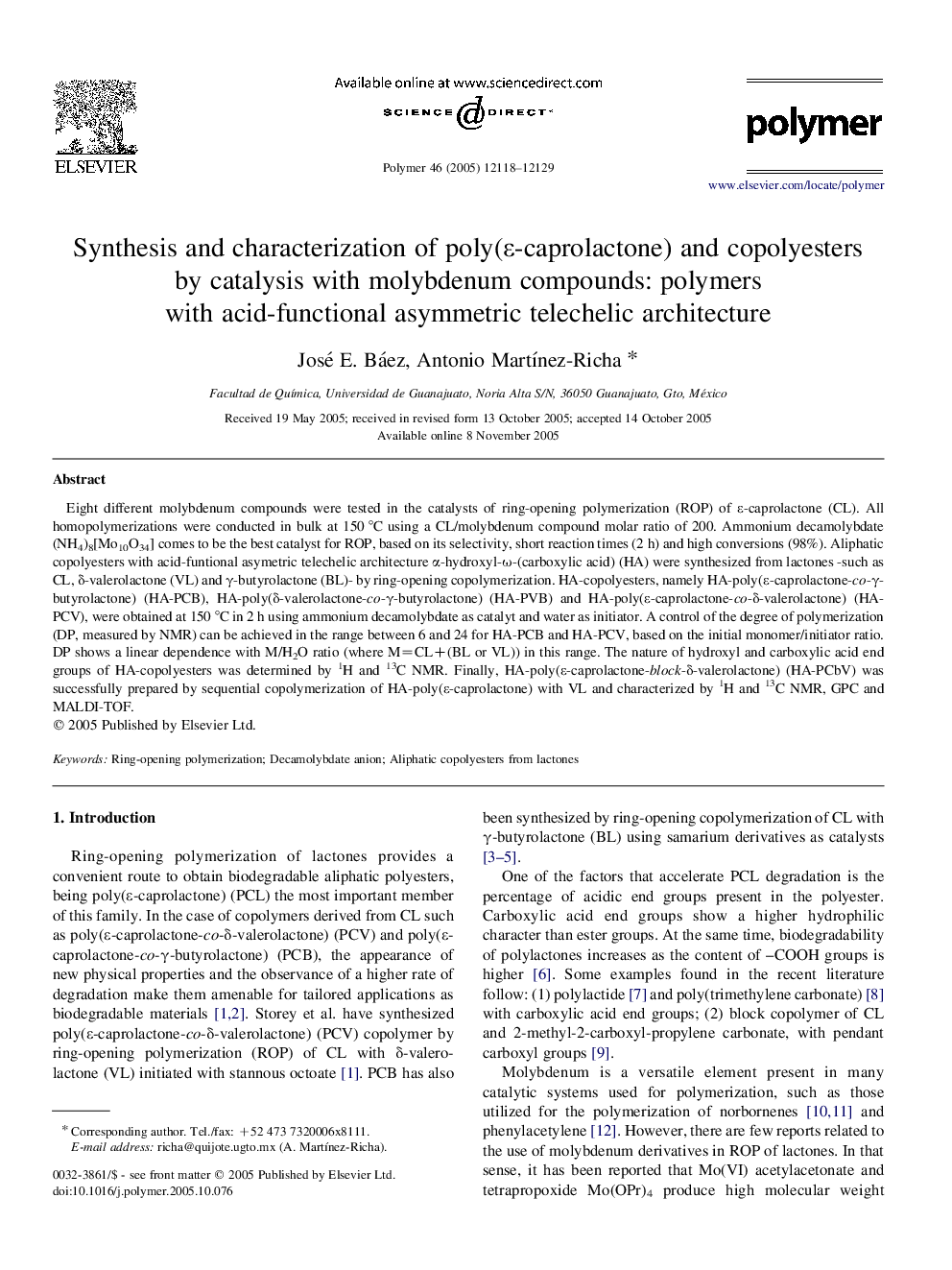| Article ID | Journal | Published Year | Pages | File Type |
|---|---|---|---|---|
| 5189610 | Polymer | 2005 | 12 Pages |
Abstract
Eight different molybdenum compounds were tested in the catalysts of ring-opening polymerization (ROP) of ε-caprolactone (CL). All homopolymerizations were conducted in bulk at 150 °C using a CL/molybdenum compound molar ratio of 200. Ammonium decamolybdate (NH4)8[Mo10O34] comes to be the best catalyst for ROP, based on its selectivity, short reaction times (2 h) and high conversions (98%). Aliphatic copolyesters with acid-funtional asymetric telechelic architecture α-hydroxyl-Ï-(carboxylic acid) (HA) were synthesized from lactones -such as CL, δ-valerolactone (VL) and γ-butyrolactone (BL)- by ring-opening copolymerization. HA-copolyesters, namely HA-poly(ε-caprolactone-co-γ-butyrolactone) (HA-PCB), HA-poly(δ-valerolactone-co-γ-butyrolactone) (HA-PVB) and HA-poly(ε-caprolactone-co-δ-valerolactone) (HA-PCV), were obtained at 150 °C in 2 h using ammonium decamolybdate as catalyt and water as initiator. A control of the degree of polymerization (DP, measured by NMR) can be achieved in the range between 6 and 24 for HA-PCB and HA-PCV, based on the initial monomer/initiator ratio. DP shows a linear dependence with M/H2O ratio (where M=CL+(BL or VL)) in this range. The nature of hydroxyl and carboxylic acid end groups of HA-copolyesters was determined by 1H and 13C NMR. Finally, HA-poly(ε-caprolactone-block-δ-valerolactone) (HA-PCbV) was successfully prepared by sequential copolymerization of HA-poly(ε-caprolactone) with VL and characterized by 1H and 13C NMR, GPC and MALDI-TOF.
Keywords
Related Topics
Physical Sciences and Engineering
Chemistry
Organic Chemistry
Authors
José E. Báez, Antonio MartÃnez-Richa,
